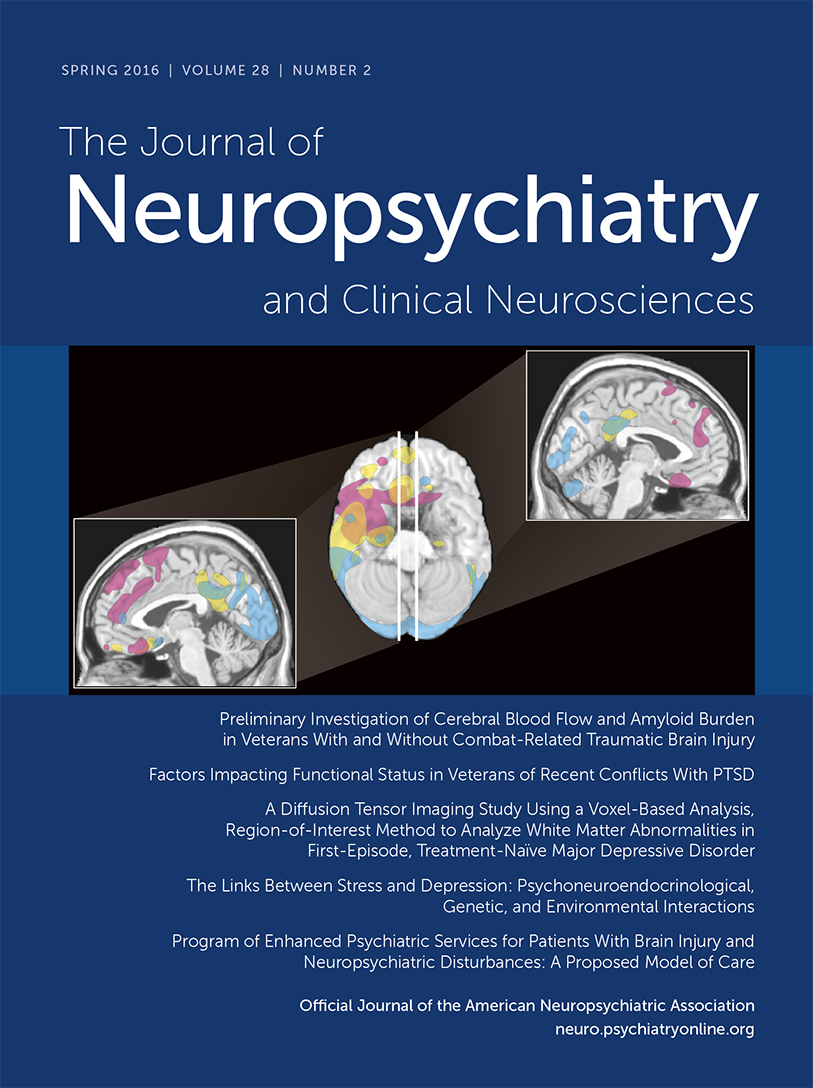Brain Regions Associated With Internalizing and Externalizing Psychiatric Symptoms in Patients With Penetrating Traumatic Brain Injury
Abstract
A factor structure underlying DSM-IV diagnoses has been previously reported in neurologically intact patients. The authors determined the brain regions associated with factors underlying DSM-IV diagnoses and compared the ability of DSM-IV diagnoses, factor scores, and self-report measures to account for the neuroanatomical findings in patients with penetrating brain injuries. This prospective cohort study included 254 Vietnam War veterans: 199 with penetrating brain injuries and 55 matched control participants. Measures include DSM-IV diagnoses (from a Structured Clinical Interview for DSM), self-report measures of depression and anxiety, and CT scans. Factors underlying DSM-IV diagnoses were determined using an exploratory factor analysis and correlated with percent of brain regions affected. The ability of the factor scores, DSM-IV diagnoses, and the self-report psychiatric measures to account for the anatomical variance was compared with multiple regressions. Internalizing and externalizing factors were identified in these brain-injured patients. Damage to the left amygdala and bilateral basal ganglia was associated with lower internalizing factor scores, and damage to the left medial orbitofrontal cortex (OFC) with higher, and bilateral hippocampi with lower, externalizing factor scores. Factor scores best predicted left amygdala and bilateral hippocampal involvement, whereas DSM-IV diagnoses best predicted bilateral basal ganglia and left OFC involvement. Damage to the limbic areas involved in the processing of emotional and reward information, including structures involved in the National Institute of Mental Health’s Research Domain Criteria Negative Valence Domain, influences the development of internalizing and externalizing psychiatric symptoms. Self-report measures underperformed DSM-IV and factor scores in predicting neuroanatomical findings.



